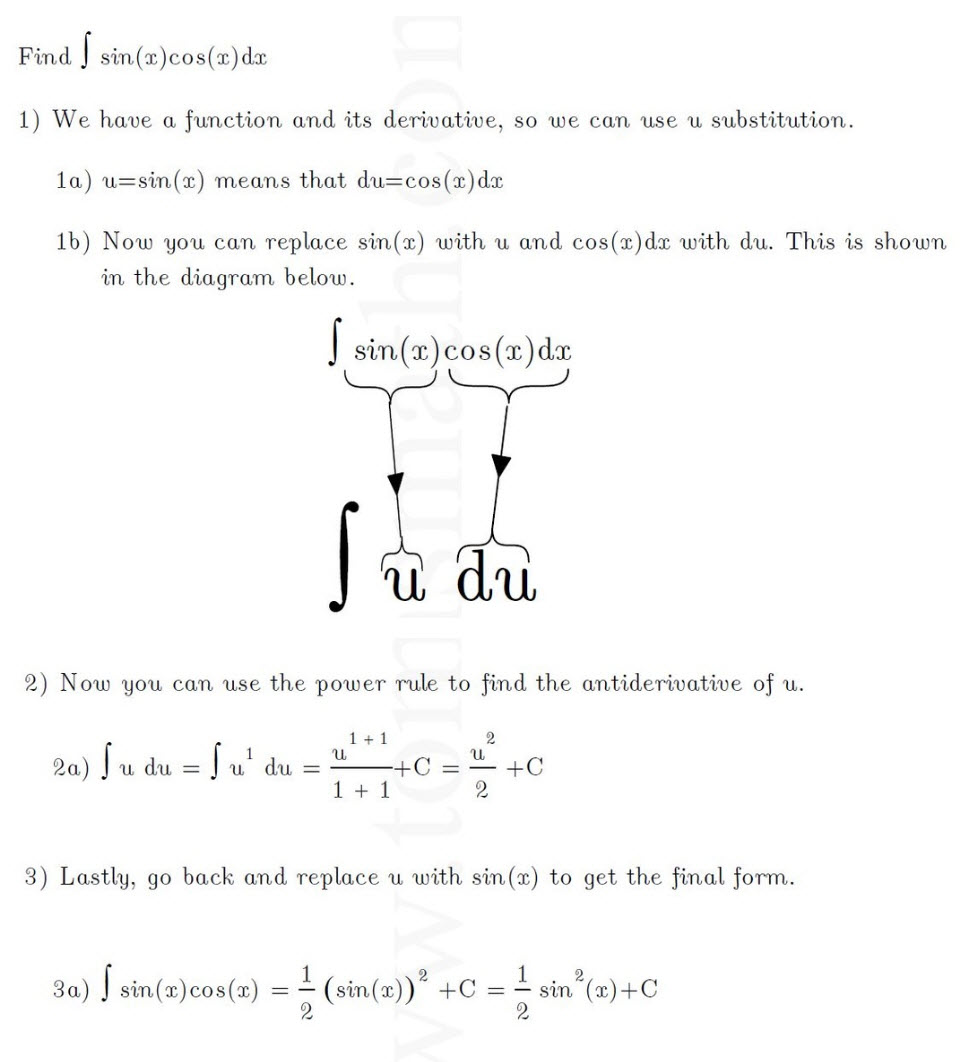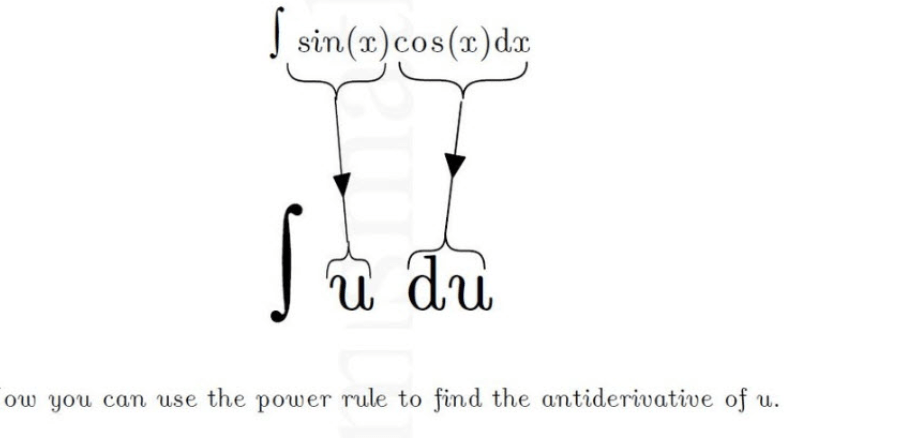Finding the Antiderivative of sin(x)cos(x): A Comprehensive Guide
Keyphrase: Antiderivative of sin(x)cos(x)
In this guide, we will explore the process of finding the antiderivative of sin(x)cos(x), a common function in calculus. Understanding how to integrate this function is essential for various mathematical applications.
Steps to Find the Antiderivative of sin(x)cos(x):
- Identify the Function: We want to find the antiderivative of sin(x)cos(x).
- Use the Double Angle Identity: Recall the double angle identity for sine: sin(2x) = 2sin(x)cos(x). We can rewrite our function as: sin(x)cos(x) = ½ * 2sin(x)cos(x) = ½sin(2x).
- Write the Integral: Now, we want to integrate ½sin(2x) with respect to x: ∫ ½sin(2x) dx.
- Apply the Constant Multiple Rule: We can take the constant ½ outside the integral: ½ ∫ sin(2x) dx.
- Use the Chain Rule for Integration: We need to integrate sin(2x), which requires a substitution: Let u = 2x, then du = 2 dx, and dx = du/2. Our integral becomes: ½ ∫ sin(u) du/2 = ¼ ∫ sin(u) du.
- Integrate sin(u): The integral of sin(u) is -cos(u), so our expression becomes: -¼cos(u) + C, where C is the constant of integration.
- Substitute Back: Replace u with 2x: -¼cos(2x) + C.
- Write the Final Result: The antiderivative of sin(x)cos(x) is -¼cos(2x) + C.
Conclusion:
Finding the Antiderivative of sin(x)cos(x) involves using the double angle identity for sine, applying the constant multiple rule, using the chain rule for integration, and performing a substitution. The final result is -¼cos(2x) + C, where C is an arbitrary constant. This process is an essential skill in calculus and has applications in physics, engineering, and other scientific fields.


